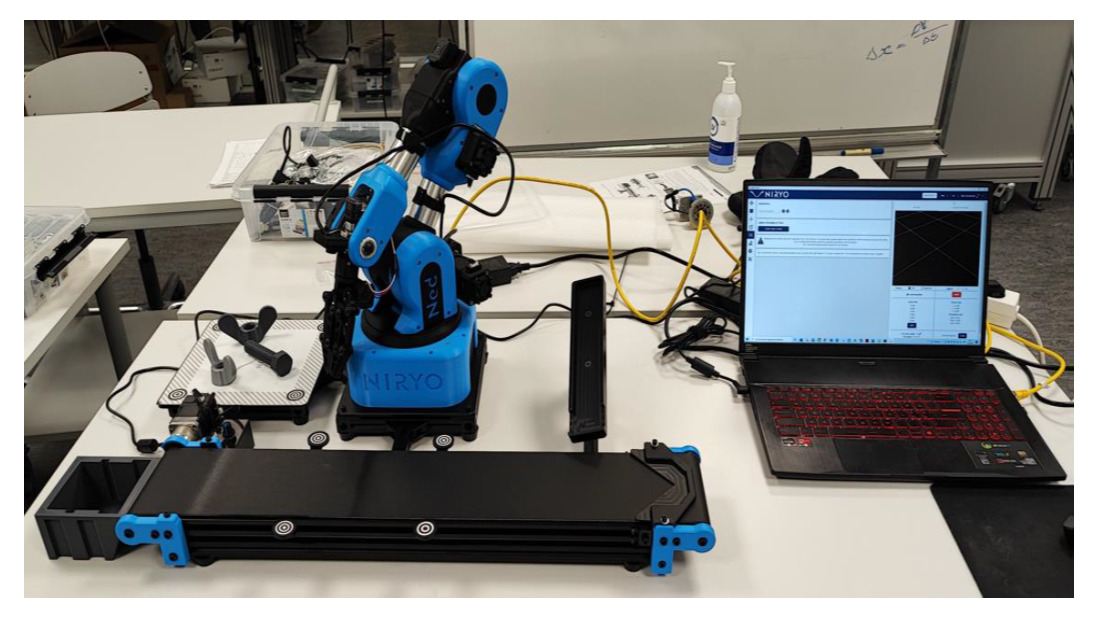
Savonia Article: Engineer 4.0 knows industrial internet
#SavoniaUAS
Savonia University of Applied Sciences has been participating in an EU-funded Erasmus+ project entitled Virtual Learning Environment in Smart Mini Factory (VLEFACT). The project started on 01.11.2021, and the proposed date of ending is 01.11.2023. Four educational institutions, two from Finland, Ylä-Savo Municipal Federation of Education and Savonia University of Applied Sciences, one from Germany, Carl-Benz-Schule Gaggenau, and a Danish partner, Mercantec, form the consortium.
The concrete objective of the project is to create a joint online learning course, ” Sustainable smart manufacturing and solutions.” The course consists of five modules, and every module has a unique quality of the whole course. The course presents a new, innovative education model implemented as a flexible online course that can rapidly adopt immersive training using augmented and virtual reality. It combines physical and virtual learning facilities to broadly increase student access to emerging technologies via smart factories and other real-world settings.
In industrial production, there is always a need and a goal to improve profitability and quality. The next leap in profitability is sought from the industrial internet, which means the internet of things in an industrial environment, in a smart factory. This is also often referred to by the term industry 4.0. The operation of a smart factory requires the expertise of its own.
In Savonia UAS’s Bachelor of Engineering, Information Technology (Internet of Things) degree program, students practice their skills in a smart mini-factory setting. In the mini smart factory environment produced by the German company Lucas-Nuelle, students can make pilots related to the industrial internet, e.g., for data collection, transfer, and analysis.
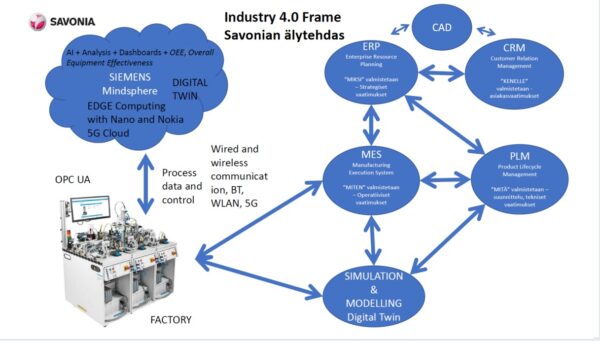
Smart factories do not exist in Finland to the same extent as there are in, for example, Germany. Finland’s task is to quickly grasp this know-how and train experts who can be among the first to utilize this industrial internet technology. Because of this, the Ylä-Savo vocational college YSAO, Savonia, and two other European partners are developing virtual teaching materials related to smart mini-factories.
The VLEFACT project develops learning materials and teaching models related to the industrial internet, which is taught with the help of smart mini-factories. In the project, several teaching modules are created. The first of them focuses on the so-called digital twins of smart factories. In other modules, students, for example, learn about the cooperation of people and collaborative robots (cobots) and the utilization of augmented reality (AR/VR/XR) in a smart factory environment. In this project, Savonia is responsible for producing educational material, especially related to distributed manufacturing and the use of sensors as a tool for data collection and analysis.
In autumn 2022, a group of students from the partner organizations was able to test together the first completed teaching modules and learn new things about the industrial internet, sensors, and cobots. The students found the teaching materials exciting and informative.
And most importantly, they found what they learned helpful in their future. The technologies brought by the fourth industrial revolution are part of the everyday life of future engineers, just as various mobile applications and cloud environments are part of anyone’s working day in 2022. About 30 students from four different schools participated in the first LTTA (Learning Teaching and Training Activity) event that took place in October 2022 at Mercantec, Denmark, to pilot the learning modules.
Savonia University of Applied Sciences is responsible for building the course materials for Sensor’s Data Collection and Analysis and the Data-Driven Manufacturing modules. Sensor’s data collection and analysis module was piloted at the LTTA 1 in Denmark. In this module, students demonstrated three exciting projects related to sensor data collection in the smart factory environment.
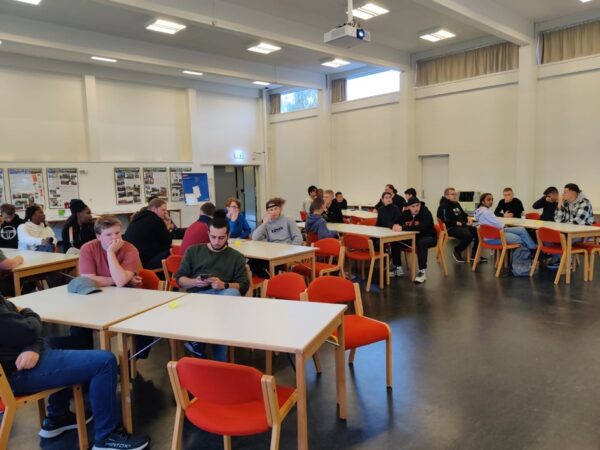
Demonstration of Robot Control using leap motion sensor:
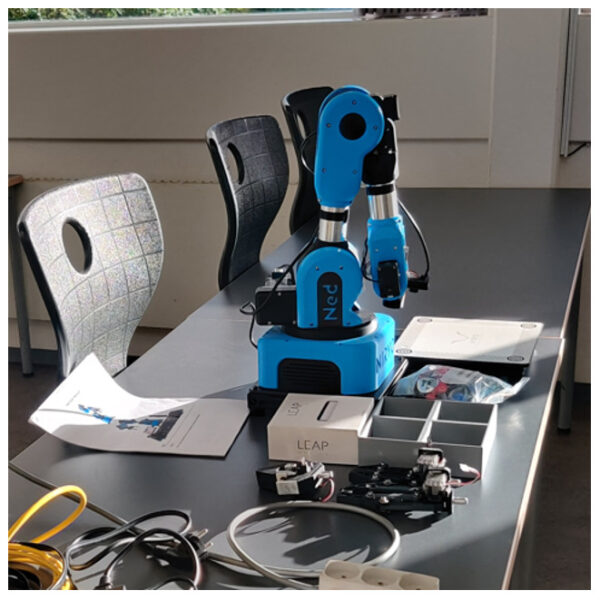
In a factory environment, it is essential that machines or robots need to be controlled remotely. Students have demonstrated a prototype where a robot was trained to work with the leap motion sensor. The leap motion sensor consists of optical sensors and infrared lights. In this module, students have controlled the jaws of the arm based on the gestures of the hands. Students first installed the required software for the actual operation of the leap sensor. After the demonstration by the Savonia students, Mercantec, YSAO, and German students groups practiced the same operation and learned how the operation was carried out. The students connect the leap motion to a computer by USB and then places their hand over the leap motion controller to control the Niryo Robot.
Object Detection by Robot in a Smart Factory:
In the innovative factory environment, it is essential to detect several object sizes and shapes and arrange them at the exact location. This is the second use case where we have demonstrated highly accurate recognition of wing nuts and bolt and picking up by the robot and keeping them at the conveyer belt. Object modeling, python programming, and testing the models are some of the critical steps for recognizing and placing identical objects in the factory.
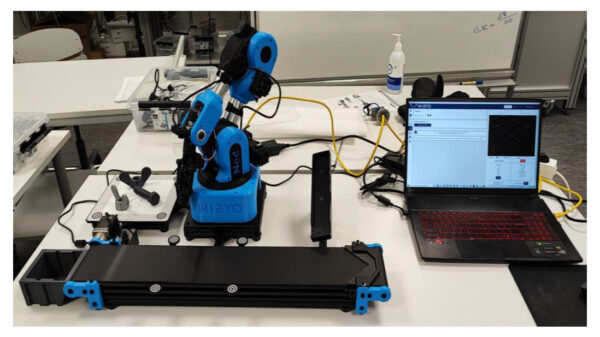
Accelerometers and Gyroscopic Sensors Real-time Data Visualization
The third exciting project demonstrated and piloted by the students under module 4 (Sensor data collection and analysis) was the visualization of accelerometers, gyroscopes, and microphone sensor data. It is important again to monitor the health of the machines in the factory. These real-time visualizations would alert the person to be aware of the environment. Some of these pictures are illustrated in Fig. 5.
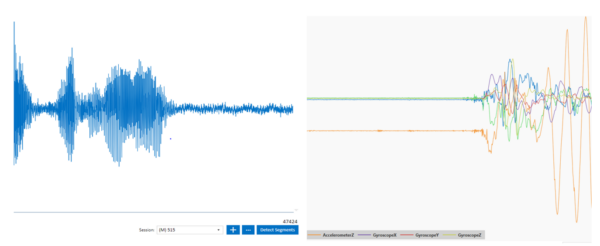
Savonia is also creating a module that will be piloted by students in March 2023. The module will for example showcase Savonia’s Industry 4.0 framework, where manufacturing units, such as MES, ERP, PLM, etc., are connected with 5G and the Mindsphere cloud. Similarly, topics related to energy measurement and data-driven manufacturing are covered in this unit.
Authors:
Solja Ryhänen, Rajeev Kanth and Arto Toppinen
